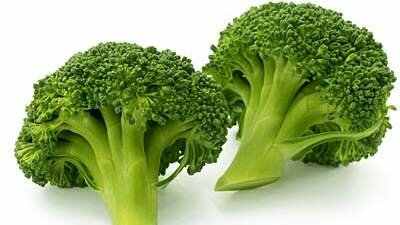10 Key Vegetables And Their Nutritional Value
Scientists and nutritionists continue to argue over what constitutes a vegetable. Strictly speaking, a vegetable is any part of a herbaceous plant eaten by humans as food. So, in this sense, lettuce leaves are vegetables, asparagus is a vegetable, carrots are a vegetable, as are garlic, peas and beans, squash, peppers and tomatoes. Tomatoes, however are also consider fruits under the botanical definition and under the legal definition.

For the purposes of this discussion, botanical and culinary fruits such as green peppers or pumpkins and nuts, herbs, seeds, and grains and fungi such as mushrooms will be ignored to focus on culinary vegetables.
Broccoli Broccoli is high in dietary fiber and is missing only vitamin B and vitamin D to have a full range of vitamins. Broccoli has no saturated fat and only some sodium. Cholesterol in broccoli is non existent. Broccoli is one of those foods that is good to choose when trying to lose weight. It even is a good source of protein, which surprises many people. This is helpful to know when one is combining vegetables to form a complete protein source.
Spinach Cooked spinach is one of the highest ranking vegetables in providing complete nutrition. It is high in dietary fiber and gets top marks for every other nutrient identified in the diet with the exception of vitamin D and vitamin B12. It is low in saturated fat and fairly low in cholesterol. The most outstanding negative feature in consuming spinach is that is contains a significant amount of sodium.
Carrots Almost everyone is aware that carrots are one of the highest nutritional sources for vitamin A, but carrots are also an excellent source for antioxidants. Reduced heart disease, cancer protection and increased night vision are all positive qualities associated with this root vegetable. Many people do not realize that a diet rich in carrots will help to protect a person exposed to second hand smoke from contracting cancer and other diseases associated with cigarette smoking.
Cabbage Cabbage is part of the cruciferous family of vegetables named because of the cross (crucifix) shaped flowers. Medical researchers have found that the phytochemicals in cabbage known as indoles inhibit the growth of colon, stomach and breast cancer. On the down side, excessive amounts of cabbage in the diet may lead to problems with the thyroid gland. Cabbage prepared in coleslaw has significant amounts of iron, vitamin C, potassium and calcium.

Celery Celery is one of those foods that most people love or they hate, but there is no question that it is a dieter’s friend. In addition to it’s very high fiber content, celery is excellent in providing phosphorus, magnesium, calcium, pantothenic acid, vitamin B6, riboflavin, manganese, potassium, folate, and vitamins K, C, and A. Unfortunately, celery is also high in sodium content which is not the best nutrition happening. Dieters love the food because it contains negative calories. It actually uses more calories to digest it than you take in by eating it.
Asparagus Providing almost 60 percent of the recommended daily allowance of folic acid, asparagus plays a starring role of vegetables helpful in prevention of spina bifida. Asparagus has a wealth of nutrients, dietary fiber and it is low in sodium. Asparagus is another vegetable that contains no cholesterol or fat, making it a dieter’s friend.
Sweet Corn Consuming a diet that includes corn and other foods high in beta-cryptoxanthin, a carotenoid also found in pumpkins and red bell peppers may significantly reduce one’s chances of developing cancer in the lungs. This is true even if the person is a smoker. Corn is also beneficial in the amount of fiber that it adds to the diet and in the folate found in corn.

Radish Radishes are known for the ability to add piquancy to a salad, but they are also good for optimum health in that they contain high dietary fiber, very low fat and cholesterol. Consuming three radishes raw provides potassium, folate and vitamin C, calcium, vitamin B6 and riboflavin. In addition, radishes provide manganese, copper and magnesium.

Green Beans Some would argue that green beans are not a vegetable, but a fruit in that they contain the seeds inside the pod in the same way that apple seeds are found within the apple. However, few people would accept green beans as a fruit. They are excellent choices for obtaining vitamin K, vitamin C, manganese and vitamin A to your diet. In addition, green beans are high in dietary fiber.
Lettuce Romaine lettuce contains a significant portion of the daily recommended allowance of vitamins K, C and A. It is also noted for the presence of manganese and folate. Since a one cup serving adds only 15 calories to your daily intake, lettuce is an excellent choice for weight reduction.




